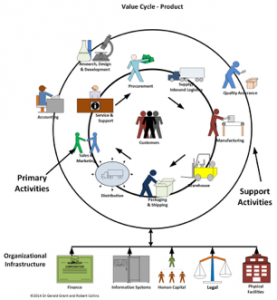By Gerald Grant, Ph.D.
October 12, 2016
People at all level of all types of organizations are increasingly frustrated by the failure to benefit from large-scale IT investments. The news continues to be bad and a key reason is that many organizations make these large investments without understanding how their organizations actually satisfy their customers’ needs and make money. Many executives and managers don’t consciously think about their firms’ business model when they sign off on major investments. Without a good understanding of your business model and who it is benefitting, it is difficult to know whether the investments you are making will deliver any lasting value. In many instances, IT investments are made simply to address technical issues or to copy what the competition is doing. All of this without reference to what is important to the customer who is central to value delivery. If the customer does not get value from the products or services produced by the firm they will not pay for them and will seek that value somewhere else.
Michael Porter, a professor at Harvard University, popularized the idea of value chains. Value chains describe the essential activities and processes that organizations must engage in to produce value. The value chain concept has made significant contributions to our understanding of how organizations make money. However, we believe it is too linear and assumes that the customer is there. Instead of value chains we want you to think in terms of value cycles, with the customer at the very center (see the figure inserted). Everything that an organization does, including every investment it makes, must have as its guiding criterion the value that customers are willing to pay for or fund. If the investment will not ultimately deliver value to the customer then that investment is not worthwhile. It is simply an unnecessary cost. Of course, not all investments have a direct impact. However, all investments, whether it is the purchase of new hardware and software or the training of employees to use new software, should lead to greater value for the customer. The customer is central to the value cycle.

Business and IT managers spend a lot of their time and energy trying to align business and IT with little success. Alignment doesn’t come from bringing departments together to talk about alignment. Alignment happens when the customer becomes the central focus of the value cycle. If customers are not satisfied with your value cycle they will move to your competitors’ value cycle. When they walk away, they do so, financially, physically, and emotionally. At that point, they are likely not to come back. Ask Nokia, Blackberry, and many other companies about their experience.
